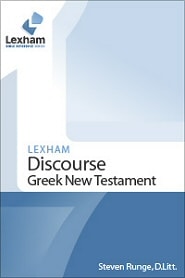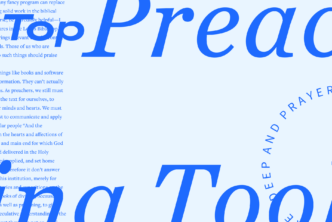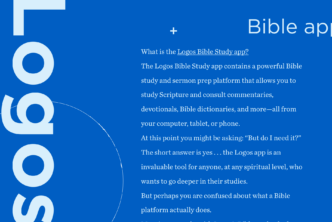So why is it left untranslated so much of the time? Because it is what Robert Funk (the F in BDF fame) called a function word. It doesn’t so much mean something as it signals something. It’s what grammarians call a concessive adverb; it’s only purpose in life is to create the expectation that another related element is coming, with the latter being the more important of the two. Take a look at how adding the underlined words affects the following statements.
- I really liked what you fixed for dinner.
- While I really liked what you fixed for dinner…
- Although I really liked what you fixed for dinner…
- I mostly liked what you fixed for dinner …
If you have been married for any length of time, you might have a guess about what might happen next. All but the first statement have a function word that anticipates something more. In English, we would expect this to be a not-so-positive something. Not so in Greek.
The use of μέν creates what is called a counterpoint, setting the stage for a more important point that follows. It lets us know from the outset that something more is coming, that the initial statement is somehow incomplete. Here is an NT example taken from the Lexham High Definition New Testament:
The bullet in the first line stands in the place of the untranslated function word μέν. The and
symbols delineate the counterpoint and the more important point that follows. John the Baptist is letting folks know that he is not the one they are looking for. He even does this in the grammar through the use of μέν. There is natural parallelism between the first and last part of the verse through the repetition of baptize, but the added function word makes this connection much more explicit. Figuratively speaking, it signals the first shoe dropping, creating the expectation that another, more important one is about to follow.
There are 179 occurrences of μέν in the NA27/UBS4 Greek text, and in the vast majority of cases, this word is left untranslated. Why? Because counterpoints cannot be signaled as easily in English as in Greek. We have to use clunky idioms like on the one hand, notwithstanding, in as much as, although, etc. Most often in conversation folks will say “While I liked X…” even though time is not the central focus.
So we have a fundamental problem here: how do you convey important exegetical information other than with a translation? You could use commentary or footnotes, but can be difficult to connect the comments to the text. There is a much more effective alternative, only available through Logos.
This week is the third anniversary of a bold experiment: The Lexham Discourse Greek New Testament (LDGNT) and the Lexham High Definition New Testament: ESV Edition (HDNT). These projects take the most useful insights from linguistics, discourse analysis and Bible translation, then annotate all occurrences of devices like μέν using an easily accessible set of symbols. Hovering over the symbol conveniently pops up a glossary description, so there is no need for memorization.
The feedback on how people are using these resources has been amazing! Pastors and Bible teachers are using them in their preparation because they tackle issues not addressed in most commentaries. Professors are using them to equip pastors to more carefully exegete Scripture, both in tools-based programs and as part of advanced Greek grammar classes. Bible translators are using the LDGNT to help mother-tongue workers to accurately preserve important features from the Greek in their translation. ESL teachers are using the HDNT to teach students the ins and outs of idiomatic English.
These projects are also the basis for the new High Definition Commentary series that is now underway, talking you through the text and providing integrated graphics for teaching.
In response to requests from users, Old Testament counterparts are in production, beginning with the Lexham Discourse Hebrew Bible (LDHB) and the Lexham High Definition Old Testament (HDOT).
Take the time to watch the introductory videos to see how the HDNT and the LDGNT will enrich your Bible study. The HDNT is English-based, the LDGNT is for those comfortable working with a Greek interlinear. Logos is pioneering not only discourse-based Bible study, but also innovative ways to meaningfully communicate it.
Related posts:
- Making of the Lexham High Definition New Testament
- Waiting for the Next Shoe to Drop, Part 1
- Waiting for the Next Shoe to Drop, Part 2
- Talking about What I Am Talking About
- Who Cares About Participles? I Do!
- Stylistic Variation or Intentional Shaping? A Look at Characterization in John 11
- Paying Attention to ‘This’ and ‘That’






